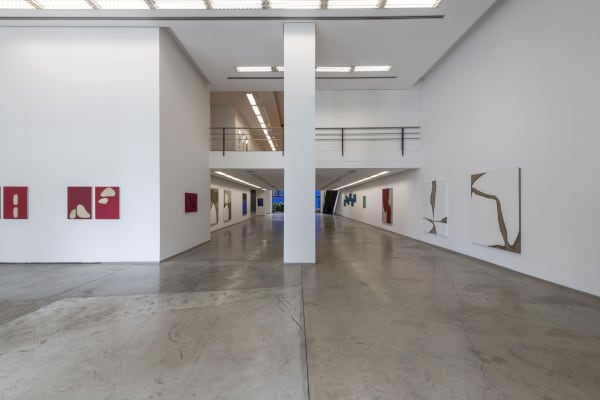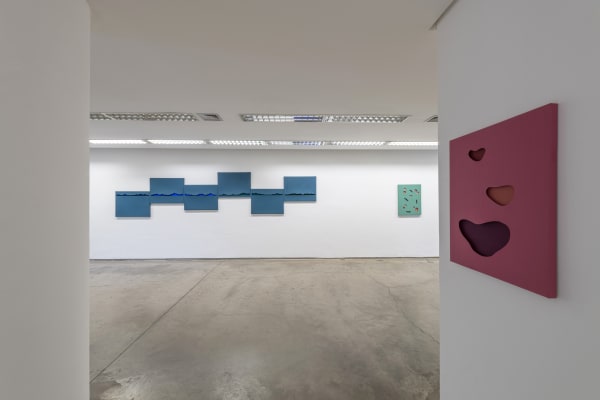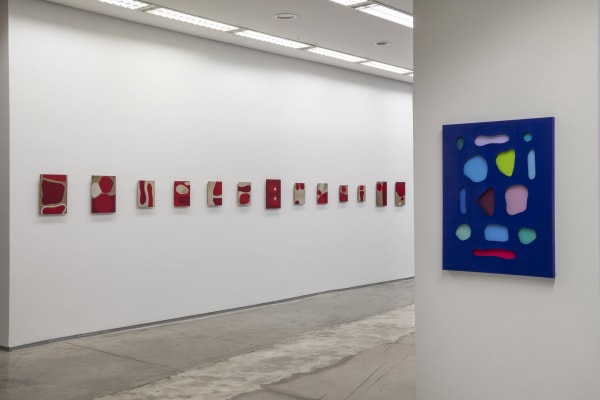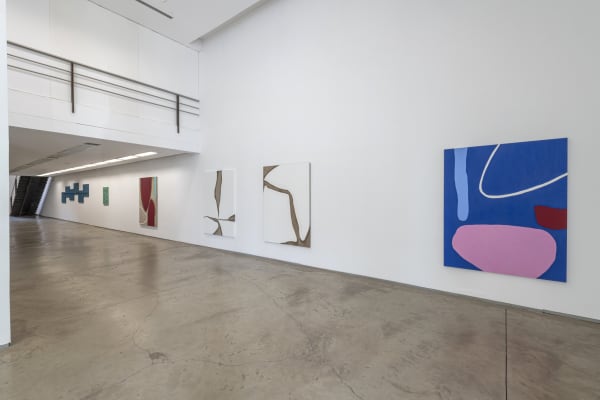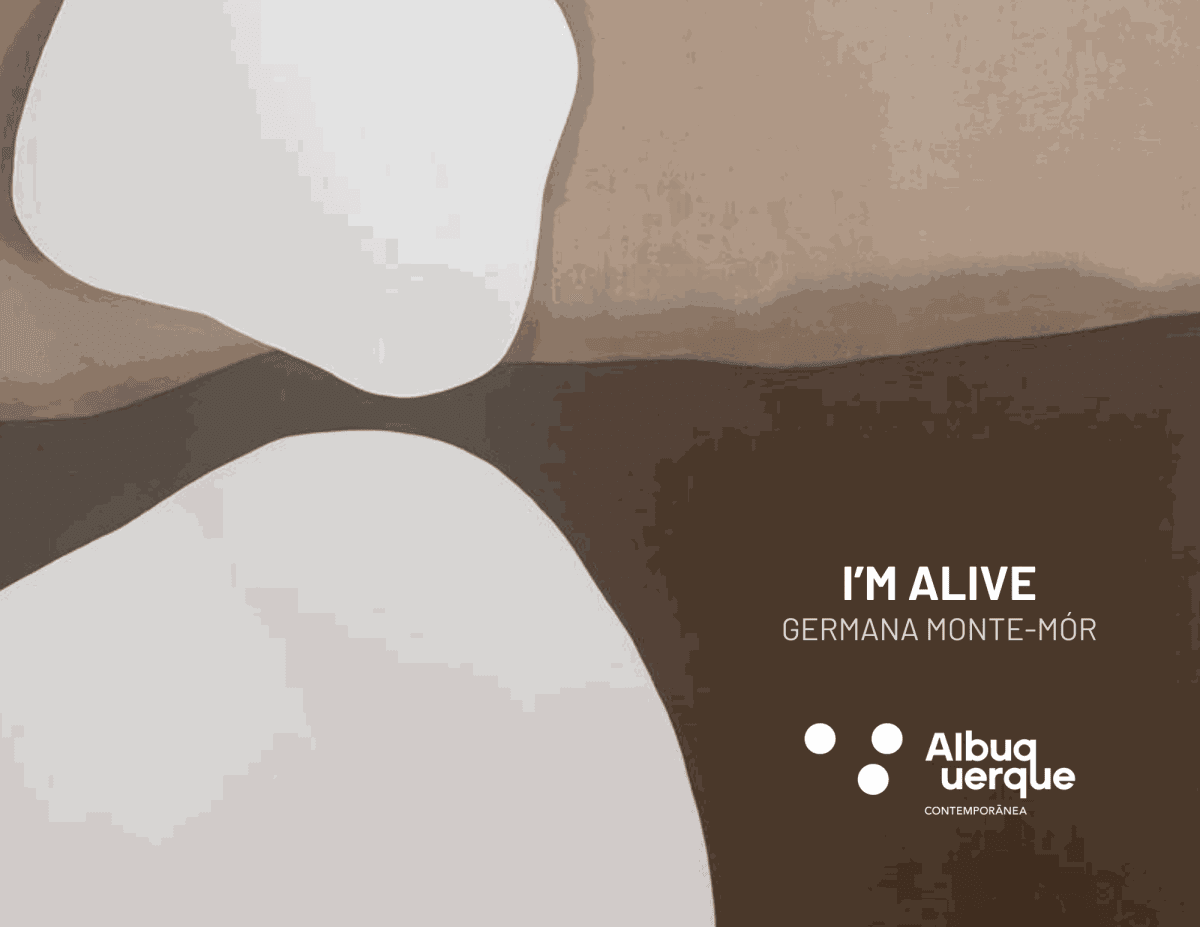I'm Alive: Germana Monte-Mór
Artist Germana Monte-Mór's treatment of a varied palette of colors in her works¹ is relatively recent. Since 2015, she has been making drawings and paintings more consistently in which asphalt and oil paint appear as protagonists in organic forms, simulating a slow and engaging dance in a shifting space. As a natural development of his poetics, which since the 1990s has been on the threshold of experimentation between matter and form, the geological aspect² of his most recent works is increased by a powerful energy in which different tones of blue, red, green, pink , orange, brown and yellow transform the surface into a field of light radiation.
The sensorial appeal of the asphalt works resulted from a certain remission to the formless, with their sinuous lines and edges and the slow and spontaneous movement that they seemed to perform, and whose sensation was enhanced by the evidence of the mineral character of the paint that spontaneously followed a path of dilution and solidification upon contact with surfaces (screen and paper). Now the embodied materiality of color is in the foreground. These are pure, vibrant, extroverted colors, which in the reliefs in which the artist superimposes two canvases appear in bold combinations.
As a whole, the works resemble prehistoric inscriptions, like figurations sedimented on a stone or wall, whose curvilinear forms signal an active life process, in expansion and reciprocal adaptation. However, the strong and saturated colors stabilize the passages with demarcated contours, pulsing affirmatively before us. And so they seem to dialogue with the kind of dissonant joy of Matisse's glued papers or with the grace of Hans Arp's reliefs and collages with amoeboid figures.
The exploration of the three-dimensionality present in works with reliefs takes place both through the creation of hollow cutouts and through the collage of felt figures onto the colored canvas, in a positive-negative play on the organic forms that the artist makes migrate from one work to another, as in a combinatorial game in which similar is never the same. This open-ended dynamic is also, in my opinion, the cause of the special pleasure they provoke: a sensation of freedom, of multiplicity, of variety that in no way comes close to the repetitive and limiting character of contemporary society.
And again we are immersed and immersed in the natural world, as Germana Monte-Mór's works do not let us forget the embodied part of art, what is sensual and corporeal about it. Since modernity, fighting against the anesthetization or alienation of our own body has always been a task of art in the midst of the inhospitable environment produced by industrial and post-industrial society. I dare say that, after the last few years of confinement due to the pandemic, in which human relationships were reconfigured and our entire sensory apparatus underwent a process of accelerated fragmentation due to the increasing virtualization of life, the attitude of reoccupying sensitive space, of putting the body back at the center of the experience is not a simple task. At the same time, it stands as a fundamental exercise for a possible arts policy today. And, contrary to current discourse, it is not only through counter-narratives that follow the legitimate desire for reparation that art can have this political role. However, it is also focusing on the rediscovery of the senses through small delicacies and subtle and silent gestures, as Germana Monte-Mór does in these works that are figurations of a place of pulsating experience. Because, despite everything, we are alive.
Taisa Palhares
__
[1] As art critic Rodrigo Naves observed in the essay “Germana Monte-Mór: trajectories of imagination” (2017), written as a presentation for the artist’s exhibition at Galeria Estação, in São Paulo.
[2] Art critic Tiago Mesquita carefully observed the predominance of geological motifs in the artist’s work in the presentation of the book “Da goat”.




